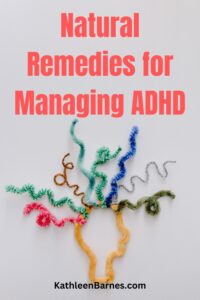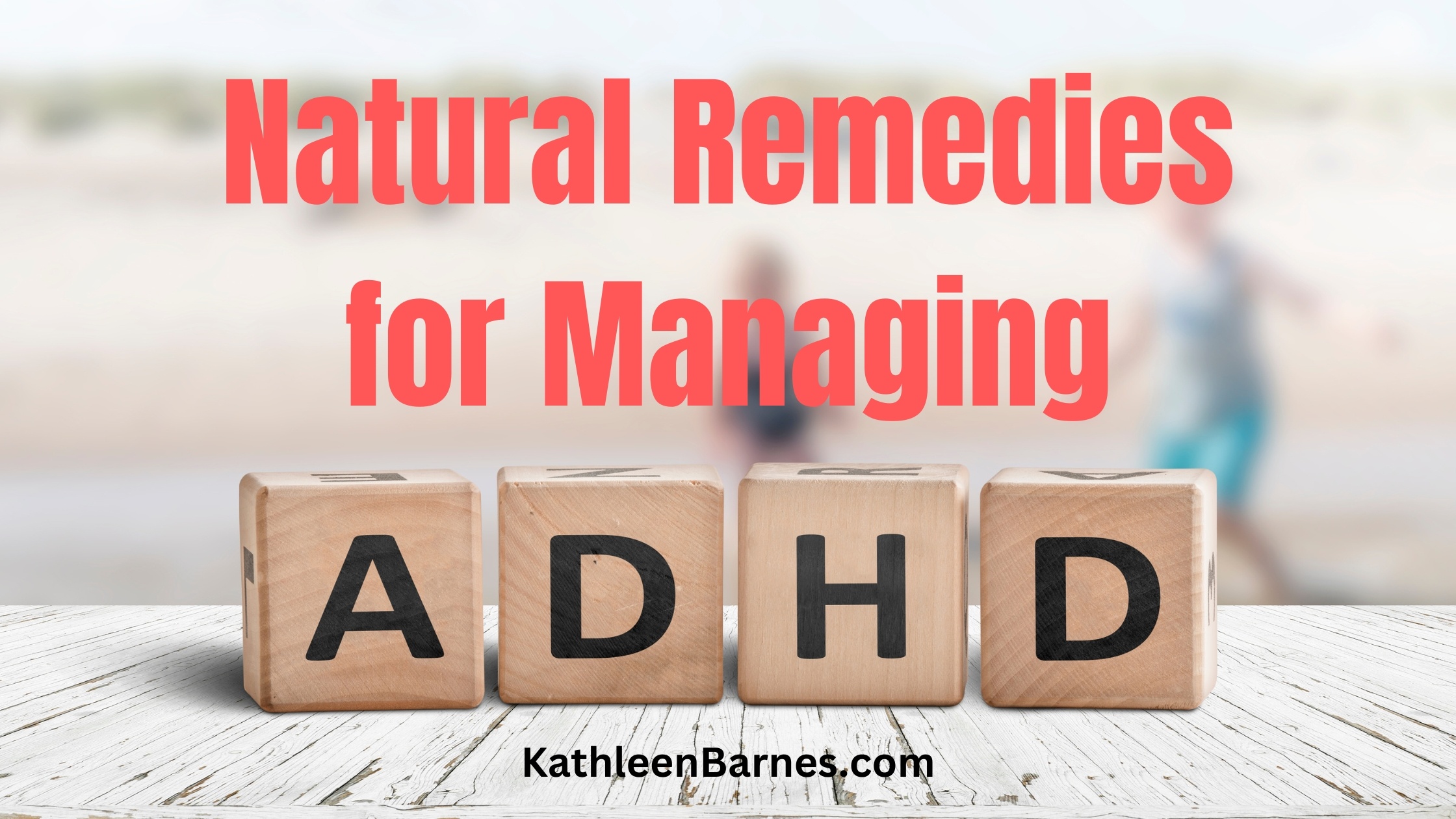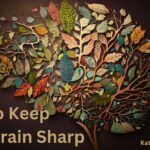In 1985 at the age of 10, I was diagnosed with Attention Deficit Disorder (ADD), more commonly known today as Attention Deficit Hyperactivity Disorder (ADHD). My symptoms manifested most in my academic performance.
Attention Deficit Hyperactivity Disorder (ADHD). My symptoms manifested most in my academic performance.
While I didn’t exhibit the hyperactivity aspect, I found school frustratingly boring, and the monotony of the classroom almost more than I could bear.
Needless to say, it was a trying time for both me and my parents. At that time, ADHD was a relatively new concept, and with words like “deficit” and “disorder” in the name, my mother was concerned and essentially unprepared for the journey we were all about to embark upon.
- What is Attention Deficit Hyperactivity Disorder?
- Common Challenges Faced by Individuals with ADHD
- Traditional Treatments for ADHD and My Story
- A “Medication is off the table” Approach to ADHD
- Positive Benefits and Aspects of ADHD
- Natural Approaches to ADHD Treatment
- Herbal Remedies and Supplements for ADHD
- Final Thoughts
- References and Further Reading
What is Attention Deficit Hyperactivity Disorder?
Today, ADHD is a widely known condition that affects both children and adults. It is characterized by symptoms such as:
- Inattention
- Hyperactivity
- Impulsivity
These symptoms significantly impact daily functioning, academic performance, and interpersonal relationships. They usually appear in childhood and persist into adulthood.
Of course, that is the short version of the most notable symptoms.
ADHD has two main types – Inattention and Hyperactivity/Impulsivity. Each type has a long list of struggles individuals may face.
Symptoms of ADHD can be broadly categorized into these two types.
Inattention symptoms may include:
- Difficulty sustaining attention in tasks or play activities
- Frequent careless mistakes in schoolwork or other activities
- Seeming not to listen when spoken to directly
- Difficulty following through on instructions and completing tasks
- Trouble organizing tasks and activities
- Avoiding or being reluctant to engage in tasks that require sustained mental effort
- Losing items necessary for tasks and activities
- Being easily distracted by extraneous stimuli
- Forgetfulness in daily activities
Hyperactivity-impulsivity symptoms may include:
- Fidgeting with or tapping hands or feet, or squirming in seat
- Leaving seat in situations when remaining seated is expected
- Running or climbing in inappropriate situations
- Inability to play or engage in activities quietly
- Being “on the go” or acting as if “driven by a motor”
- Talking excessively
- Blurting out answers before questions have been completed
- Difficulty waiting for one’s turn
- Interrupting or intruding on others’ conversations or games
Sound like someone you know? Essentially, ADHD could be categorized as a spectrum disorder not unlike Autism because every case is unique.
As you might imagine, living with symptoms such as these presents many challenges.
Common Challenges Faced by Individuals with ADHD
Living with ADHD presents a variety of challenges that can impact academic performance, work, social interactions, and daily living.
Academic and Work-related Challenges:
- Poor organizational skills – Individuals with ADHD often struggle to keep track of assignments, deadlines, and materials, which can lead to underperformance in school and work.
- Difficulty with time management – Managing time effectively can be a significant hurdle, resulting in procrastination, missed deadlines, and incomplete tasks.
- Inconsistent performance – Those with ADHD may experience fluctuating levels of productivity, which can lead to frustration and decreased self-confidence.
Social and Interpersonal Challenges:
- Impaired social skills – Difficulty paying attention during conversations, impulsivity, and interrupting others can make social interactions challenging, often leading to misunderstandings and strained relationships.
- Emotional regulation – People with ADHD might experience intense emotions and have trouble managing anger, frustration, or disappointment, complicating social and professional relationships.
- Low self-esteem – Persistent struggles in various aspects of life can contribute to feelings of inadequacy and low self-worth, impacting mental health and overall well-being.
Daily Living Challenges:
- Disorganization – Keeping personal spaces, such as homes and workspaces, organized can be particularly difficult, leading to clutter and additional stress.
- Forgetfulness – Frequently forgetting appointments, commitments, or daily tasks can disrupt routines and cause problems in personal and professional life.
- Impulsivity – Impulsive decisions or actions can result in negative consequences, such as financial issues, relationship problems, and risky behaviors.
That’s quite the stack, isn’t it?
Imagine relying on one type of medication to fix all of that. That has been the case traditionally with ADHD medications.
Traditional Treatments for ADHD and My Story
Traditional treatments for ADHD have been mostly in the form of medication. There is a very big problem because the medications typically prescribed are stimulants.
It doesn’t sound logical, does it?
Let’s give a hyperactive kid speed. Something strange happens when you give someone with ADHD stimulants. They have an opposite calming effect that allows the individual to focus.
My symptoms manifested in my 4th grade classroom. This was the first year of school when interactions with the teacher became less personal. We went from sitting around the teacher as a central figure, to the teacher standing at the front of the classroom.
Something else also happened that year. I was in a combination class that contained both 4th and 5th graders. I have no idea why this happened or why anyone would think it was a good idea.
What ended up happening was the teacher would assign whichever grade level she wasn’t actively teaching busy work while she taught the other.
ADHD and busy work do not go well together. I found it nearly impossible to complete my daily tasks. It was a miserable year.
In 5th grade, my symptoms continued in the same manner, and I think out of sheer frustration, my mom mentioned the trouble I was having to my doctor.
That was the first time the term “learning disability” entered our lives. My mom could not bear to hear it. She knew in her heart there was nothing disabled about me.
After a litany of appointments, a psychologist diagnosed my particular brand of “disability” as Attention Deficit Disorder and also an Auditory Dysfunction that affected the way I hear numbers.
I was prescribed Ritalin.
For two years, I was chained to my desk by a tiny yellow pill I took twice a day.
To say it transformed my life is an understatement. I went from a C student to A’s and B’s in one 9-week period. This was the single benefit.
I was forced to comply with an educational system designed to teach children to abandon individuality and toe the line. Because I was a square peg that didn’t fit the round hole, I took medication that made me round…in more ways than one.
Stimulants tend to affect appetite. Ritalin made me eat less, but it was also wrecking my metabolism. This would be the beginning of a lifetime of weight issues.
In the mid-80s, it was thought that once a child with ADHD went through puberty, the effects of stimulant medication reversed and it would actually behave as a stimulant. I was taken off Ritalin at age 12 and put on Prozac instead.
After a month, my mom took me off all medication. Prozac was extremely controversial at the time, and I think my mom would rather deal with the ramifications of a poor academic performance than whatever issues a controversial substance might cause.
That was the last time I took medication for ADHD.
A “Medication is off the table” Approach to ADHD
So, did I suffer academically? You bet I did, but a certain level of maturity also kicked in, and I learned to deal with my symptoms without medication.
I found out that if I could keep the part of my brain prone to wander busy, I could focus in class. For example, taking notes or doodling worked really well for this. It also drew less attention than randomly wandering around or talking, both frowned upon in the classroom.
This coping mechanism carried me all the way through college where I excelled with Dean’s List and Honor level grade point averages.
I still use it to this day. My best friends are a blank page and a pen.
That being said, this isn’t a mechanism that works across the board, and what works for me may not work for you or your child.
I still struggle greatly with focus and other challenges of life with ADHD. That’s why I believe some of the other non-medical solutions I discuss a little later will be helpful.
Positive Benefits and Aspects of ADHD
With a name that contains words like “deficit” and “disorder”, the odds seem already stacked against people who suffer from ADHD.
The superpowers that come with this “disorder” are seldom discussed, and I wouldn’t be true to myself if I left them out.
Many individuals with ADHD possess unique strengths and talents that contribute to their success and well-being.
Creativity and Innovation
Individuals with ADHD often have creative and innovative minds. Their ability to think outside the box and come up with unique solutions can be a significant asset in fields that require creativity and original thinking, such as art, design, writing, and entrepreneurship.
High Energy and Enthusiasm
The hyperactive aspect of ADHD can translate into high energy levels and enthusiasm, which can be advantageous in various situations.
Hyperfocus (This one is my favorite!)
Hyperfocus is the ability to concentrate intensely on a task or activity of great interest. While it can be challenging to manage, hyperfocus can also be a powerful tool for productivity and achievement.
When engaged in a task they are passionate about, individuals with ADHD can achieve a state of deep focus and immersion, leading to high levels of productivity and quality work.
Hyperfocus can help individuals develop expertise in specific areas of interest, allowing them to master skills and knowledge.
Resilience and Adaptability
Living with ADHD often requires developing coping strategies and resilience, which can be valuable traits in personal and professional life.
Overcoming the challenges associated with ADHD can build resilience and determination, helping individuals handle adversity and setbacks more effectively.
ADHD individuals often learn to adapt to various situations and find creative solutions to problems, enhancing their ability to navigate change and uncertainty.
Problem-Solving Abilities
The unique way in which individuals with ADHD process information can lead to exceptional problem-solving skills. They often see problems from a different angle, allowing them to find creative solutions that others might not consider.
Their ability to think on their feet and adapt quickly can make them highly resourceful in challenging situations.
Strong Sense of Justice and Fairness
Many individuals with ADHD have a strong sense of justice and fairness, which can drive them to advocate for others and stand up for what they believe is right.
By recognizing and nurturing these positive aspects, individuals with ADHD can leverage their strengths to achieve personal and professional success, enhance their well-being, and make meaningful contributions to their communities.
Natural Approaches to ADHD Treatment
A Disclaimer – As always, you should work closely with your doctor and medical team to explore solutions outside the traditional means.
While natural treatments can be highly effective, they should not replace professional medical advice and treatment.
Each individual’s experience with ADHD is unique, and what works for one person may not work for another. It is essential to consult with healthcare professionals before making any significant changes to your treatment plan, especially if you have underlying health conditions or are currently taking medication.
This blog post aims to provide informative and educational content, but it is not a substitute for personalized medical advice.
I wish I could say I’ve tried all these and they’ve worked like gangbusters, but I mostly rely on the coping methods I’ve developed for myself through trial and error.
ADHD is a journey, and everyone is different. Perhaps some of these methods will get you ahead of the curve with less trial and error. That’s a solid goal.
Herbal Remedies and Supplements for ADHD
Herbs
- Ginkgo Biloba – Enhances blood flow to the brain, which can improve memory, focus, and mental clarity. It may boost attention and reduce hyperactivity in individuals with ADHD.
- Brahmi (Bacopa Monnieri) – Known to enhance cognitive function, improve memory, and reduce anxiety. Its antioxidant properties protect the brain from oxidative stress, potentially improving focus, attention span, and reducing impulsivity.
- St. John’s Wort – Commonly used for its antidepressant and mood-stabilizing effects. It may help alleviate ADHD symptoms, especially in individuals with comorbid depression or anxiety.
Supplements
- Omega-3 Fatty Acids – Essential for brain health and cognitive function. Omega-3 supplements can reduce hyperactivity and inattention by improving brain function and reducing inflammation.
- Magnesium – Crucial for maintaining normal brain function. Magnesium deficiency can exacerbate ADHD symptoms like restlessness, irritability, and poor concentration. Supplementing can promote a calmer, more focused state of mind.
- Zinc – Involved in neurotransmitter function and brain development. Zinc deficiency is linked to ADHD, and supplementation can reduce hyperactivity and impulsivity by supporting dopamine production.
When incorporating herbal remedies and supplements into your ADHD management plan, follow dosage guidelines and consult with your physician to ensure safety and effectiveness.
Mindfulness and Meditation for ADHD
Mindfulness practices can manage ADHD symptoms by improving focus, emotional regulation, and overall well-being. Incorporating simple meditation techniques into daily routines is highly effective for individuals with ADHD.
Some quick and easy meditations to try:
Breathing Meditation
How to Practice – Sit comfortably with your back straight. Close your eyes, take a few deep breaths, and focus on your breath.
Duration – Start with 5 minutes, gradually increasing to 15-20 minutes.
Benefits – Calms the mind, reduces anxiety, and improves focus.
Body Scan Meditation
How to Practice – Lie down or sit comfortably. Close your eyes, take deep breaths, and move your attention through your body, noticing any sensations.
Duration – 10-20 minutes.
Benefits – Enhances body awareness, reduces tension, and promotes relaxation.
Guided Imagery
How to Practice – Sit or lie down, close your eyes, and visualize a peaceful place. Imagine the sights, sounds, and smells.
Duration – 10-15 minutes.
Benefits – Reduces stress and anxiety, enhances relaxation, and improves concentration.
Mindful Walking
How to Practice – Walk in a quiet place, focusing on the sensation of your feet touching the ground and your surroundings.
Duration – 10-20 minutes.
Benefits – Combines physical activity with mindfulness, improves focus, and reduces restlessness.
Exercise and Physical Activity for ADHD
Regular exercise enhances brain function, improves mood, and increases well-being for individuals with ADHD.
- Improved Focus and Attention – Exercise increases dopamine and norepinephrine levels, crucial for attention and focus.
- Reduced Hyperactivity and Impulsivity – Provides an outlet for excess energy and helps regulate behavior.
- Enhanced Mood and Reduced Anxiety – Stimulates endorphin production, alleviating anxiety, depression, and stress.
- Better Sleep – Improves sleep quality and duration, contributing to better cognitive function and emotional regulation.
Some recommended types of exercise that are great for individuals with ADHD include, but are not limited to: Yoga, Aerobics, and Martial Arts.
Routine Management for ADHD
Structured routines and effective time management create a predictable environment, reduce anxiety, and enhance productivity for those dealing with ADHD.
The benefits of which include helping improve consistency, reducing stress and anxiety, improving focus and productivity, and helping individuals manage their time more efficiently.
You basically have to convince your brain to start tasks that you routinely struggle with. You can do this with a few tricks:
- Visual schedules, lists, and planners
- Breaking tasks into smaller steps
- Designated study areas
- Time blocking
- Minimize distractions
- Set goals
Tools and Apps to Aid in Routine Management
- Todoist – Task management app for organizing and prioritizing tasks.
- Trello – Visual project management tool for organizing tasks.
- Google Calendar – Digital calendar for scheduling and reminders.
- Habitica – Gamified task manager for developing positive habits.
- Forest – App to encourage focus by growing virtual trees.
The Impact of Sleep on ADHD Symptoms
Sleep impacts cognitive function, emotional regulation, behavioral control, and overall health. Poor sleep exacerbates ADHD symptoms.
Tips for Establishing Healthy Sleep Habits
- Create a Consistent Sleep Schedule
– Regular bedtime and wake time.
– Gradual adjustments if needed.
- Develop a Relaxing Bedtime Routine
– Engage in calming activities.
– Avoid stimulating activities.
- Optimize Your Sleep Environment
– Ensure comfortable bedding.
– Keep the room cool, dark, and quiet.
- Be Mindful of Diet and Exercise
– Avoid caffeine and heavy meals close to bedtime.
– Engage in regular exercise.
- Manage Stress and Anxiety
– Practice relaxation techniques.
– Write down worries or to-do lists before bed.
Natural Aids to Promote Better Sleep
- Melatonin – Regulates sleep-wake cycles.
- Herbal Teas – Chamomile and valerian root tea promote relaxation.
- Essential Oils – Lavender and cedarwood oil for calming effects.
- Magnesium Supplements – Helps relax muscles and calm the nervous system.
- Warm Milk or Tart Cherry Juice – Natural sources of melatonin.
Final Thoughts
While these holistic strategies can provide significant benefits, it is essential to adopt a personalized approach.
Every individual with ADHD is unique, and what works for one person may not work for another.
Plan to experiment with different strategies, track progress, and adjust as needed. Consulting with healthcare professionals and therapists can help tailor these approaches to suit individual needs.
References and Further Reading
Books
- The ADHD Advantage – What You Thought Was a Diagnosis May Be Your Greatest Strength by Dale Archer.
- Driven to Distraction (Revised) – Recognizing and Coping with Attention Deficit Disorder by Edward M. Hallowell and John J. Ratey.
- The Mindfulness Prescription for Adult ADHD – An 8-Step Program for Strengthening Attention, Managing Emotions, and Achieving Your Goals by Lidia Zylowska.
Websites
- ADDitude Magazine – Offers articles, resources, and support forums for individuals with ADHD and their families.
- CHADD (Children and Adults with Attention-Deficit/Hyperactivity Disorder) – Provides resources, support groups, and advocacy for ADHD.
Apps
- Headspace – A mindfulness and meditation app with specific programs for focus and ADHD.







